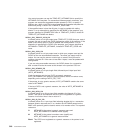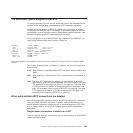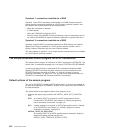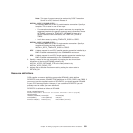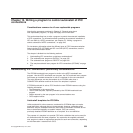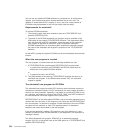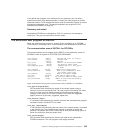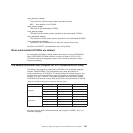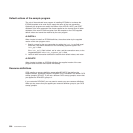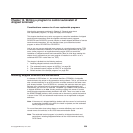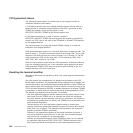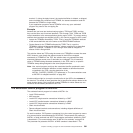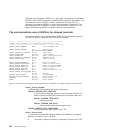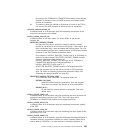
isaic_networkid (Input)
An 8-character field containing the network ID of the system trying to connect,
as sent on the connect flow.
isaic_port (Input/Output)
The call back port number for the client. -1 means that no call back is allowed.
The autoinstall user program can modify this for the same reason that it can
modify the host name, unless it is -1, in which case it cannot be changed. The
autoinstall user program is also not allowed to change this value to -1.
isaic_receivecount (Input)
A 4-byte binary field containing the number of receive sessions that the remote
system wants to be supported by this IPCONN. (These are send sessions at
the remote system end.)
isaic_response (Output)
Response code: zero means OK.
isaic_suggested_applid (Input)
An 8-character field containing a remote system applid “suggested” by CICS. If
the applid of the remote system pointed to by isaic_applid is blank, CICS uses
a counter to generate an 8-character decimal digit name in the form “00000027”.
isaic_tcpipservice (Input)
An 8-character field containing the name of the TCPIPSERVICE on which this
connect flow arrived.
isaic_template (Input/Output)
An 8-character field containing the name of an installed IPCONN to be used as
a template for the new IPCONN.
By default, this field is blank, and CICS supplies the information required to
create the IPCONN.
The autoinstall user program can modify this field to name a template IPCONN.
If the template IPCONN is out-of-service, the autoinstall request is rejected.
The autoinstall user program at DELETE
To provide symmetry of control over the autoinstall process, the autoinstall user
program is also invoked when an autoinstalled IPCONN is deleted.
Invoking the user program at DELETE enables you to reverse the processes carried
out at the INSTALL event. For example, if the user program at INSTALL
incremented a count of the total number of automatically installed resources, then
the user program at DELETE would decrement that count.
Input to the program is by a communication area, addressed by DFHEICAP. The
layout of the communication area is shown in Figure 50.
isaic_function char(1) Function code (X’F1’ for Delete)
* char(3) Reserved
isaic_ipconn char(8) Name of the autoinstalled IPCONN
isaic_applid char(8) Applid of the autoinstalled IPCONN
isaic_networkid char(8) Network ID of the autoinstalled
IPCONN
isaic_tcpipservice char(8) Name of the TCPIPSERVICE on which
the connect flow arrived
Figure 50. Autoinstall user program’s communication area at DELETE. For IPCONNs.
556 Customization Guide



